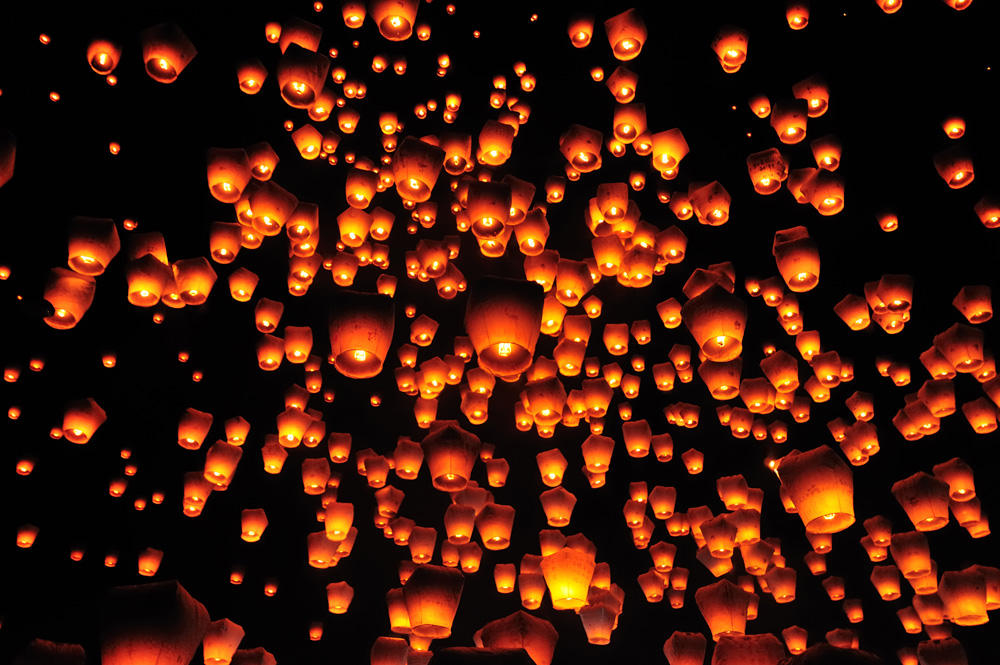
People light and release sky lanterns on the first full moon after the Lunar New Year across many cities in Asia. However, one of the most amazing and recognised places to witness the official end of New Year, taking place on 2 March this year, is at the Pingxi Sky Lantern Festival in Taiwan.
Just imagine the sight of up to 200,000 lit lanterns floating up slowly to the heavens simultaneously. What’s more, these large lanterns are inscribed with each festival-goer’s prayers, hopes and wishes, whether for family, friends or themselves. So as well as the night sky lighting up in a blaze of glory, creating a scene that’s truly one to behold, there’s a matchless atmosphere of expectation, happiness and dreams coming true. The lanterns’ release symbolises shedding the past and outdated ways and the embracing of an optimistic future. Unsurprisingly, the festival has been called one of the “15 Festivals to Attend Before You Die” by esteemed travel giant Fodors and has featured on global must-do festival lists by the Discovery Channel, CNN and National Geographic.

The Pingxi Lantern Festival is part of the Taiwan Lantern Festival, which highlights the cultural attractions of Taiwan and gives us a glimpse into its people’s spirit. And it’s held in, yes, Pingxi, an old, remote mountain town about an hour’s drive from Taipei. While Pingxi always sees people lighting lanterns that carry prayers skyward, the magnified numbers that create an expanse of incredible beauty during the festival has made the northern town rich with folklore and traditions renowned worldwide.
Buying a sky lantern, writing your desires and ambitions on it and then releasing it into the sky is still the focal point of the event that transcends cultural barriers. There’s a special base for the collective launches, which start at 6:30 p.m. and happen three times an hour until 9:30 p.m. In addition, there are folk performances, lantern riddle contests and street folk carnivals. Plus, the organisers are ensuring it’s constantly being re-imagined for today’s world, for example introducing remarkable light shows and giant luminescent mechanical lanterns.
The History of Sky Lanterns

Sky lanterns were initially used as signalling devices in one of the more chaotic periods during the Qing Dynasty, over two thousand years ago. Posses of outlaws would attack the lowland villages, forcing residents to flee to the mountains. Once the danger had passed, the brave village watchmen who stayed behind would use paper lanterns or “fire balloons” to indicate the coast is finally clear. Once their beleaguered loved ones and neighbours hiding in the hills saw the flares, they knew it was safe to return home.
Once associated with danger, these celestial flares are now symbols of celebration, peace and hope.
Did You Know?
The sky lanterns, which are small hot air balloons usually made of oiled rice paper on a bamboo frame, are outfitted with a large candle at the bottom. Once lit, the flame heats the air inside the lantern, thus lowering its density and causing the lanterns to rise into the air. They only stay airborne for as long as the flame stays alight and then float back down to the ground.

















